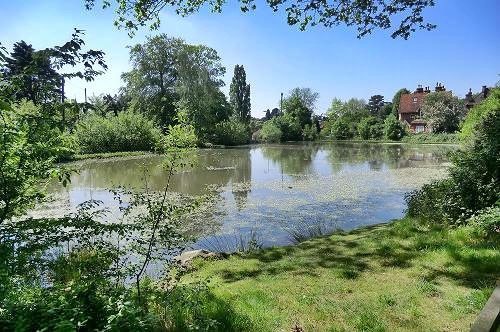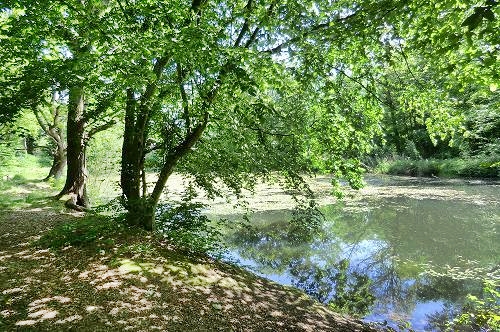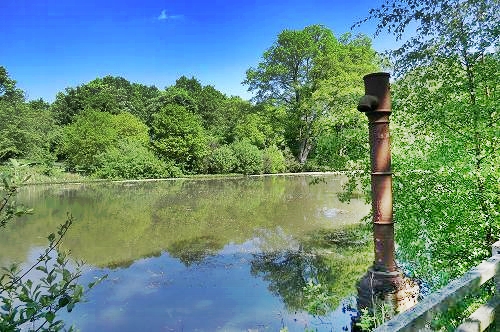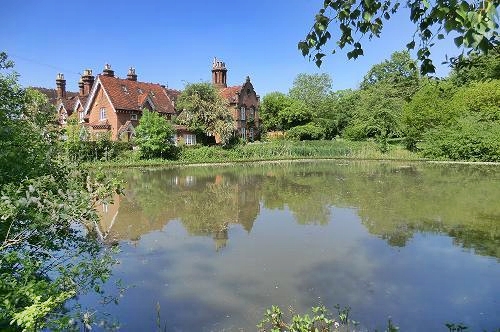Near to the top of Stanmore Hill you will find Wood Lane. Only a few minutes walk down the Lane you will find Spring Ponds. There are two ponds here Upper and Lower Spring Ponds. These two ponds are man made and date back to Roman times and quite possibly earlier. The Larger of the two ponds Upper Spring Pond is also known locally as Caesar's Pond due to the fact that a Roman Garrison was stationed here. Local legend also says that Boudicca or Boadicea and her rebel army also camped here and she would have certainly have drunk water from these ponds. It is these stony ponds or "Stane Meres" that gave Stanmore its name.
This area is known as Little Common, and is now part of the Little Common Conservation Area. This is one of six conservation areas designated in Stanmore and Edgware. It encompasses the higher section of Stanmore Hill, Little Common itself and parts of Aylmer Drive, Wood Lane, and Warren Lane. Significantly, the name of the Conservation Area relates to a remnant of greenery that was separated from the main part of Stanmore Common in 1637, as one acre of land on the Common was enclosed to be made fit for the use of bowling and so kept. The Bowling Green is where the playing fields are now. Spring pond, on the southern edge of the common, was probably the 'great pond' from which water was taken down Stanmore Hill from 1640.

The Area comprises buildings of high quality, and often historic architecture. In the core of the area by the Common, which was originally manorial wasteland I.E. common land, cottages developed slowly and in stages in the 17th century; the remnants of these within later remodeled houses probably form the nucleus of the settlement seen today. Also large listed buildings set within extensive grounds, their boundaries frequently marked by high walls, are a fundamental characteristic of the area in the 18th and 19th centuries such as Stanmore Hall and Warren House which still remain today although their use changed.
These buildings helped to shape the character and development of the area. And the interesting histories attached to many of the buildings are significant. Similarly, adding to the area & trades importance is the range of key views towards landmark buildings, architectural qualities and across open greenery, sometimes towards London. It is the delicate balance of the these factors that achieves the special overall character of the area that is both distinctive and attractive even the tall walls marking the boundary of historic estates form another overriding attribute of the area, as is the use of high quality traditional building materials used.

Smaller scale houses within the area are present as they developed as accommodation for servants who worked there at these houses. Two other ponds in the area were dug as Brewery Ponds, the largest of which supplied Clutterbuck's Brewery. An additional development within the area relates to the former Clutterbucks brewery, a Georgian Brewery which brought an industrial element to the region and the need for small houses for workers some of the former brewery buildings have now been converted into flats although the weather boarded clock-tower, with a cupola and a bell dated 1726 on the old brewery still remains and is listed.
The ponds were obviously important in the development of a settlement here. The Spring Pond is named in the Manor Court rolls in July 1776 when two local inhabitants were fined for digging holes near to the Kings highway and upon the Lords land near the Spring Pond and causing damage to the Stanmore Spring.

There is a 19th century Water Pump at the edge of the Spring Pond which is a locally listed. It is out of use and requires repair but is interesting piece of street furniture indicating former uses of the pond. It is a tall cast iron pump approximately 2.2m high and 250mm in diameter. The pump is set in a concrete and brick base.
Picnic tables are dotted around the ponds for your convenience, although parking spaces within the conservation area are in extremely short supply.
